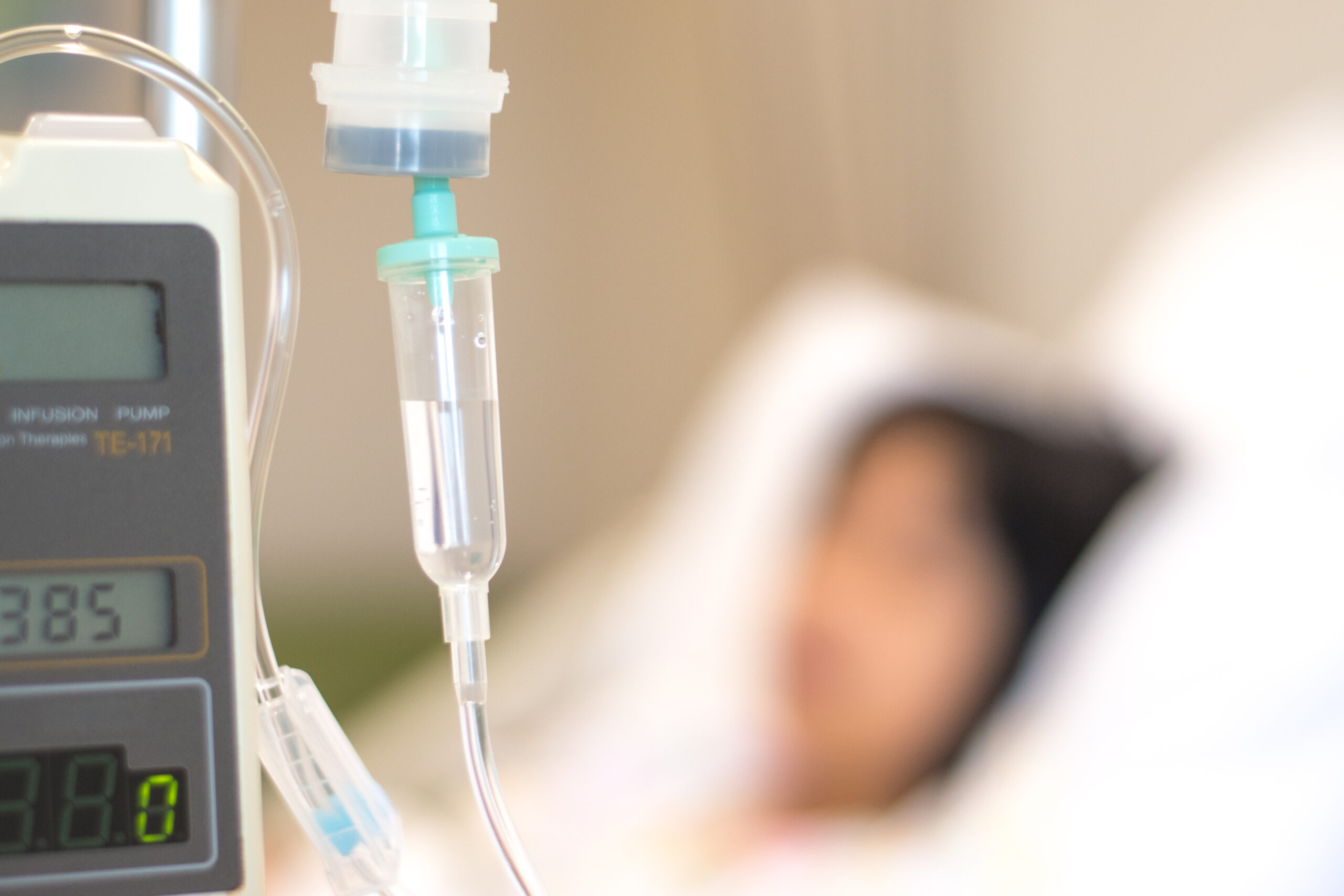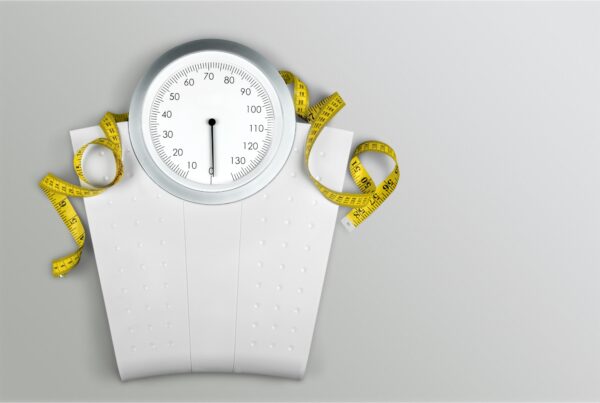“This article originally appeared on InBody USA and is reposted here with permission.”
As people continue to live longer and longer, cancer will only become more common. One of the essential treatments of cancer is called chemotherapy. For those who don’t know, chemotherapy refers to the use of chemical agents of substances in the treatment of cancer.
Chemotherapy treats cancer by using chemical substances to halt the division of cancerous cells. Unfortunately, these cancer-killing agents can also impact the patient’s metabolism and the absorption of calories. These therapies can also impact the patient’s body weight, which can affect his or her chances of survival.
In this article, we’ll discuss the body composition changes that occur when a person undergoes chemotherapy. We’ll also share practical ways to combat these changes to reduce the negative changes in body composition from treatment.
Weight Gain and Chemotherapy
There are many different types of chemotherapy treatments, however, all of them slow down the uncontrolled cancerous cell division that defines this condition. Examples of common chemotherapy agents include:
- Alkylating agents: These attack cancer cells during the resting phase before they start the process of cell division.
- Antimetabolites: These are agents that are absorbed by cancer cells and prevent them from dividing.
- Topoisomerase inhibitors: Topoisomerases are enzymes that are required for DNA replication and cell division. These chemotherapy agents halt the action of these enzymes, making it impossible for cancer cells to divide.
Unfortunately, these chemotherapy agents also attack normal, healthy cells. These are where the side effects come from. Examples of common chemotherapy side effects include:
- Nausea and vomiting
- Hair loss
- Puffy appearance of the face
- Numbness and tingling
- Weight gain
- Urinary retention or incontinence
- Acoustic damage leading to difficulty hearing
- Pulmonary fibrosis and cardiotoxicity, in some cases
Researchers analyzed more than 200 women undergoing breast cancer treatment and found that the average patient gained around 4 kilograms (about 10 pounds).
Similar results, published in Clinical Oncology, showed that in a sample of over 100 women, the average weight change was a gain of 3.7 kilograms (about 9 pounds). These studies are in line with numerous others, indicating that many people with cancer gain weight while undergoing chemotherapy treatment.
There have been many different hypotheses proposed regarding why patients gain weight during treatment. Examples include:
- Changes in the ability to process and absorb nutrients from food
- Individuals feel sick and tired, leading to an inability to exercise
- Fluid retention related to cancer and/or chemotherapy treatment
- Steroid use to offset some of the complications related to cancer and treatment
Having excess fat (obesity) is clearly linked to an overall increased risk of cancer. However, just because you are gaining weight from treatment doesn’t mean that your chance of cancer recurring will increase, as weight gain does not always mean fat gain. The first study found no association between the amount of weight gained and the cancer recurrence. That said, these changes in body composition are highly linked to weight gain, often associated with increased risk for disease.
While these factors may contribute to weight gain, weight is not the best indicator of body composition change. While going through treatment because there are significant changes in body composition, it is imperative that you track these changes in order to understand how health risks can change over time.
Why is Body Composition Important?
For those who may not know,, body composition refers to the makeup of your body or, more commonly, your body weight. While other measures such as weight and BMI have been used as a measure of health for decades, body composition is a more accurate representation of your health and health risks. Body composition is typically divided into:
- Total body water: Located in all components of the human body
- Protein: Found in the muscles and organs
- Minerals: Includes vitamins, calcium, iron, and other trace metals that are important for various functions
- Fat: The primary way the body stores energy
Every aspect of body composition is important for a different reason. Your health isn’t just about gaining or losing weight, but about the fluctuation of the various components of your body composition. Cancer and chemotherapy can drastically impact your body composition, making it of vast importance to understand and track body composition in these patients.
What Effects does Chemotherapy Have on Body Composition?
Chemotherapy and Fat Mass
Chemotherapy, unfortunately, can cause unwanted body composition changes, as well as uncomfortable side effects.
A study was published in Clinical Breast Cancer analyzing the body composition of women undergoing chemotherapy treatment for breast cancer. Body composition measurements were completed prior to starting chemotherapy and 12 months into chemotherapy. This helped analyze not only whether or not the participants gained weight but also where and how their body composition changed.
The results indicate that those who were of normal weight gained about 4 pounds and added fat in their torso and arms. On the other hand, those who were overweight or obese prior to starting chemotherapy lost between 3 and 4 pounds.
Another study published in the Journal of Clinical Endocrinology and Metabolism analyzed body composition and weight changes in women with breast cancer undergoing treatment. Conducted in a similar manner, this study found that their patients did not have any significant changes in their weight; however, they did have an increased amount of fat mass and decrease in fat-free mass.
Why do these changes occur?
These researchers also surveyed women on their lifestyle changes as a result of their chemotherapy treatment. The survey shows that many women reduce their levels of physical activity, reduce their work activity, and have a reduction in their appetite. All potentially contributed to the changes in their body composition discussed above.
Even though these studies demonstrated that women gained weight in the form of fat, as well as lost lean mass, these studies are important because they help patients anticipate what might happen as they start chemotherapy. If patients can anticipate that these changes might happen, they can take steps to avoid or decrease the extent of these changes in body composition.
Chemotherapy and Muscle Mass
A study was completed to analyze the specific metabolic changes that happen in people who experience cancer-related cachexia. Researchers found as the patients approached death, they lost an average of 4 kg of muscle mass. These patients also lost fat mass and burned more calories, representing a major shift in metabolism.
A similar study found patients who lost more than 9 percent of their total muscle mass had significantly lower survival rates. While the average patient lost about 6.1 percent of their muscle mass, those who lost more than 9 percent were almost 3 times less likely to survive.
Since body composition and muscle mass play a major role in the survival of cancer patients, treatments should focus on proper nutrition to maintain muscle mass and prevent or minimize the effects of cachexia.
Novel Treatments and Maintenance of Body Composition
In addition to dietary changes, there are other interventions to help halt cachexia progression and increase survival. Novel treatments of cancer cachexia include:
- Exercise mimetics: Since many people are restricted to a sedentary lifestyle while undergoing chemotherapy treatment, drugs that help the body mimic exercise may stimulate muscle fibers and help retain muscle mass
- Metabolic targets: An early study on the impact of AR-42 inhibitors (a type of cancer therapy) in animals with cancer showed that those who took the medication had less reduction in muscle fiber size and strength when compared to the control group.
- Digestive targets: Probiotics are important for maintaining a healthy digestive tract while undergoing chemotherapy. Certain bacteria, such as Lactobacillus Reuteri and other probiotics, can help stimulate genetic targets and regulate inflammation, helping to reduce cachexia.
So, what does this mean for the cancer patient? People should think about incorporating various dietary changes and exercises to maintain muscle strength and slow muscle loss. It should be recommended to incorporate fish oils, amino acids, nutritional support, and exercises that focus on building muscle because, not only will this improve mood, it could also improve prognosis.
Conclusion
 Chemotherapy can significantly impact a patient’s weight and body composition.
Chemotherapy can significantly impact a patient’s weight and body composition.
Studies have shown cancer patients gain weight, however, it’s primarily fat and body water stemming from inflammation. Because of this, body composition must be tracked to understand how the various physiological changes can influence health risk. This tracking can help healthcare professionals see fluctuations in fat, water, and even skeletal muscle mass, helping to prevent the negative changes in body composition in order to increase survival and quality of life.
Because of the changes discussed above, it is important for everyone to maintain a healthy diet and remain physically active during their cancer treatment. While this can be hard because of side effects such as nausea and vomiting, it will help people maintain their body composition and could increase survival.
There are inevitable changes to the body when cancer cells proliferate in the body. Performing treatment of the cancer is of utmost priority, but the next step is to manage the health of the body. Body composition can change, which will be associated with health risks, thus performing a mixture of diet and exercise can help offset these changes. Cancer exercise is a growing field due to the increased knowledge of the benefits of exercise.
The goal is not to become a bodybuilder, so weights aren’t always necessary. The goal is to stimulate the muscle fibers by using them, sending a signal to the body that these muscles are still needed. This will prevent muscle degradation and help the body incorporate ingested protein into new muscle fibers.
For those who do enter a cachectic state, there are treatment options available such as vitamins, minerals, and amino acids. Through education and collaboration with healthcare professionals, effects on body composition from cancer and subsequent chemotherapy treatment can be delayed and patient outcomes can improve.
**
David Randolph graduated from medical school at the University of North Carolina in Chapel Hill. He is currently completing his Residency in Pediatrics at the University of South Carolina.




